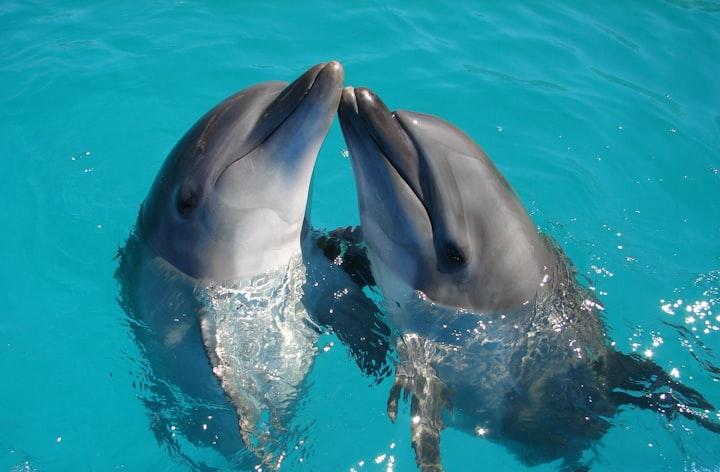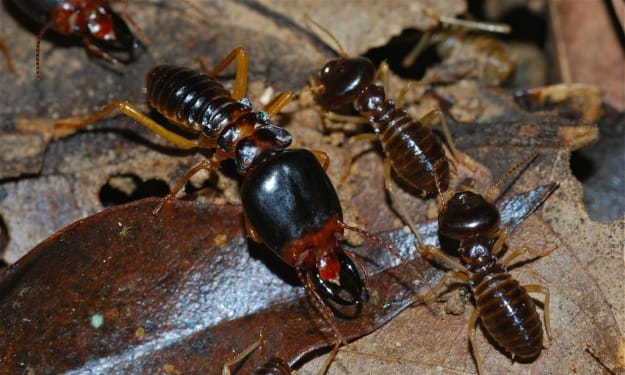Bottlenose Dolphin Moms: Using Baby Talk with Their Calves
Dolphin

Start writing...The bottlenose dolphin (Tursiops truncatus) is a fascinating marine mammal known for its intelligence, social behavior, and exceptional communication skills. One intriguing aspect of their communication is the way in which dolphin mothers interact with their calves. Similar to humans, these mothers engage in a form of communication known as "baby talk" or "motherese" when interacting with their young offspring. In this article, we will explore the phenomenon of baby talk in bottlenose dolphin moms and its significance in the development of their calves.
Baby talk, also referred to as infant-directed speech, is a unique way of speaking that adults use when communicating with infants or young children. It involves the use of a higher pitch, exaggerated intonation, simplified vocabulary, and repetition of words or phrases. Baby talk is thought to capture the attention of infants and facilitate language acquisition by making the speech more engaging and memorable. Surprisingly, similar patterns of communication have been observed in bottlenose dolphin mothers when interacting with their calves.
When dolphin moms communicate with their calves, they alter their vocalizations to create a distinct, high-pitched, and melodious tone. These sounds are often accompanied by specific body movements, such as touching, rubbing, or nuzzling their young ones. The vocalizations themselves may contain repeated patterns, similar to the repetitive nature of baby talk in humans. This modified communication style is believed to play a crucial role in fostering the bond between mother and calf and promoting the development of the calf's communication skills.
Researchers have extensively studied the vocalizations of bottlenose dolphins to understand the intricate nature of their communication. Studies have shown that dolphin mothers produce a range of vocalizations, including whistles, clicks, and pulsed calls, which are utilized in various social contexts. When interacting with their calves, however, they exhibit a distinct vocal repertoire characterized by higher frequencies and different acoustic properties. These vocalizations are often referred to as "signature whistles."
A signature whistle is a unique vocalization that serves as an acoustic identifier for individual dolphins. It is akin to a name or personal signature. Dolphin mothers typically develop their own signature whistle, and they use it when communicating with their calves. Interestingly, the mother's signature whistle is often different from that of her offspring, suggesting that this distinct vocalization plays a significant role in the mother-calf relationship.
The use of baby talk in dolphin communication has several potential functions. Firstly, it helps the mother and calf to establish and maintain contact within the group, especially in environments with complex acoustic backgrounds, such as the ocean. The distinctive vocalizations allow the calf to locate its mother easily and remain in close proximity, reducing the risk of separation. Secondly, baby talk may serve to strengthen the social bond between mother and calf. By engaging in these specialized vocalizations, the mother communicates her attentiveness, care, and availability to her offspring, fostering a sense of security and attachment.
Furthermore, baby talk in dolphins may facilitate the development of the calf's communication skills. Just as human infants learn language through exposure to infant-directed speech, dolphin calves may acquire the complex vocal repertoire of their species by imitating their mothers' modified vocalizations. This process of vocal learning is critical for young dolphins as it allows them to acquire the necessary skills to communicate effectively within their social group. By utilizing baby talk, dolphin mothers create a supportive learning environment that encourages the development of their calves' communication abilities.
The use of baby talk in dolphin communication also has parallels with the concept of "proto-conversation" observed in human-infant interactions. Proto-conversation refers to the early social exchanges between caregivers and infants, characterized by turn-taking, imitation, and contingent responses. Similarly, when dolphin mothers engage in baby talk with their





Comments
There are no comments for this story
Be the first to respond and start the conversation.